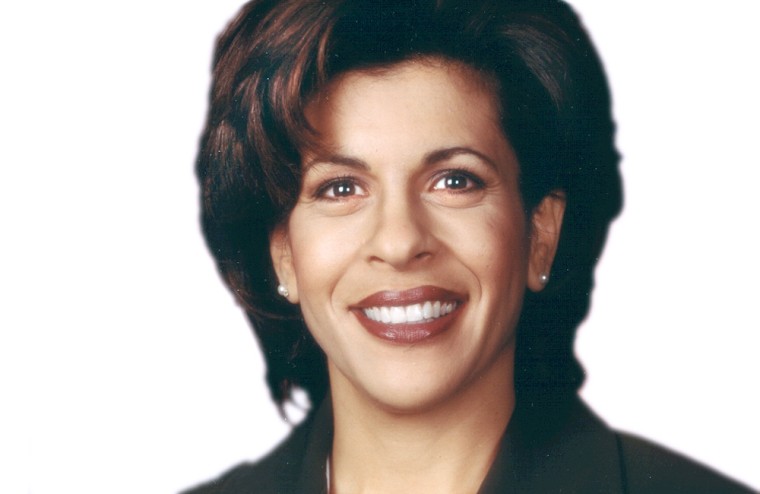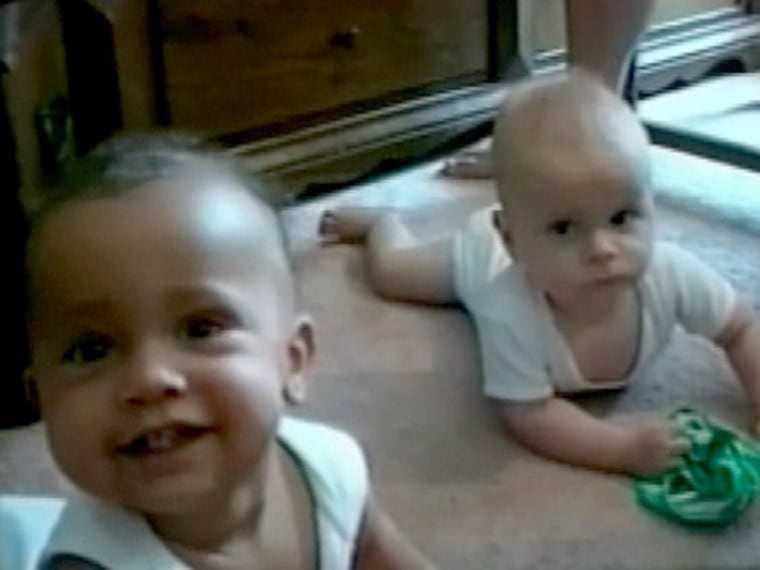Chasing after Rita (Rayner Ramirez, Dateline producer)
HOUSTON, TEXAS— Covering a hurricane is probably one of the most difficult and exhausting stories to cover. The anticipation of where and how hard the hurricane will hit is only compounded by the logistics of getting supplies like food, water and gasoline in case of the worst.
In the city known for what many refer to as bubbling crude, black gold, Texas tea -- gasoline was nowhere to be found soon after we touched down in Houston, Texas. And we were the lucky ones. Many of the 2 ½ million commuters were evacuated 48 to 72 hours from their homes were now stuck and traffic, low in gas, food and water. Though the local government began dispatching gas tankers along the highway to dispense gasoline to those who were stranded on Friday, they couldn’t get to everyone stuck on the side of the road.
As in any time of crisis, there are many unsung heroes, private citizens who step up to the plate and come to the aid of strangers. Armed with food, water and, most importantly, a few red cans filled with gasoline, folks like Skip Espinoza, along with a friend, patrolled Interstate 45 to help the stranded evacuees whose cars were parked along the road. Skip was just among dozens of people from the The Woodlands area offering a helping hand.
One woman came to the aid of a Mexican family with a 3-week-old baby, standing by their cars, out of gas and nowhere to go. She gave them gas, food and directed them to a shelter in Houston.
When Rita, passed over Houston, it was clear that the city was largely spared by the hurricane.
We headed North East to Jasper but after realizing our fuel would not take us there and back, we headed to Woodville where Dateline producer Olive Talley and correspondent Rob Stafford were following a story of a family had lost everything in Tyler County.
We booked north until we ran into roadblocks of felled pine trees.
Luckily for us, unsung heroes came to the rescue again, this time, armed with chainsaws. Private citizens with their families were eager to get back home and we were eager to get to our destination, to get to the story. While two men with chainsaws cut the trees Rob Stafford, Olive Talley and the entire GonWest camera crew - Bob Goldsborough, Dan Eblom, Al Lopez Hing Ng and myself dragged limbs, branches and trunks of trees off the road.
Pretty soon the number of cars behind us were packing up and as the number of trees blocking the road ahead were stacking up. Together the Dateline crew and a dozen people from a dozen cars in a caravan trailblazed and cleared about 20 downed trees on Rte 190. We even found another man with a chainsaw. A news team from ABC even showed up to just film the endeavor.
The journey to Woodville was an incredible community endeavor I’ll never forget, especially when we got close the very last felled trees, those from the other side heading the other direction joined in clearing the road. And once the last great divide that took the form of a giant pine was clear, everyone clapped and cheered like Red Sox fans in 2004.
For them it was a silver lining in their tense and anxiety-filled journey to go back and find out, I am hoping, that their homes are still intact. For us - the lucky TV crew - it was to report on Randy and Terrie Toney, one story, one family who, in spite of hurricane Rita not hitting as hard as predicted, lost everything but their lives.
You will meet the Toneys on Sunday’s Dateline --- a sobering reminder that a Category 3 hurricane is a force to reckon with.
E-mail: Dateline@MSNBC.com
Are you in Rita's path? (Ann Curry, Dateline anchor)

If you are in your home tonight, and in the path of Hurricane Rita... what should you do to protect yourself and your family?
According to FEMA:
- Brace all exterior doors.
- Close all interior doors.
- Stay away from windows and glass doors.
- Go to a small, interior room, closet or hallway, on the lowest level.
- And lie on the floor, under a table or another sturdy object.
Good advice. There's more of hurricane preparedness information from FEMA, by clicking on this link.
For holdouts, a mixture of defiance and anger (Hoda Kotb, Dateline Correspondent)

NEW ORLEANS— The levees couldn't hold back the water. The current came gushing down streets and roads. This is something people in New Orleans never thought they'd never see again in their lifetime. Not another day like this again… and Rita isn't even here yet.
With the hurricane just hours off shore and a mandatory evacuation in place in some spots, we thought we wouldn’t find anyone around New Orleans.Then one by one, we saw them on DeCamp street, 20 miles outside of New Orleans we found shell shocked survivors. Just home from the first round of god’s wrath, they are now deciding once again whether to go.
For a lot of folks, there’s really very little Rita can take from them. They're clinging on to hopes that they’ll dodge this bullet.
Roland Melancon makes his living on the water: his boat, his office, and his future is in DeCamp steet. He’s not going anywhere. “The last time we left, it took us 21 hours to get from here to Houston. We’re not getting in that traffic again,” says Roland’s wife, Linda.
Up the block, their neighbor is staying. He says if he has to, he will write his Social Security number on his arm as the governor suggested.
And at the end of the street, under what used to be a car port, 85-year-old World War II Vet Jerald Johnson and his wife Vicki still have some fight left in then. They can’t get in touch with their kids but they know one thing— their children know where to find them.
“I’m 80 years old. I was born and raised here. I’ve been in hurricanes all my life, and it didn’t take me then, and it isn’t going to take me now,” says Vicki.
On one lonely bridge, water was slowly rising. We came upon a chaplain who traveled all the way from North Carolina to see streets once familiar to him. The chaplain told me New Orleans is well he grew up and where he went to high school.
Staring at the punishing waters, he says that all day, people have been asking him two questions: “Why us? Why again?”
His response was one of understanding. “Everbody has moments where they get angry with God because of a disaster or tragedy like this,” says the chaplain. “But we really do come back to the fact that we see God at work in the lives of the people... in your life, in my life, in therescuers, first responders.”
As we were talking to him, suddenly the police showed up. It wasn't safe. The bridge had become an island. We quickly got out.
Several blocks away and on dry ground (at least as of this reporting), artist Geoff Holmes, the only resident we could find, had no idea that water was heading his way.
In front of his house, he erected several crosses. He says he intends to say to remember those who couldn’t. "The crosses, that’s our little memorial to all our friends in the Lower Ninth that we lost," says Holmes. "I’ll never see them again."
E-mail: Dateline@MSNBC.com
• |
Dateline tonight will have the latest on Hurricane Rita, with Stone Phillips and Hoda Kotb reporting live from New Orleans, where the levees have again been breached. Rob Stafford will be live from Houston, reporting on what is now one of the largest mass evacuations in U.S. history. We'll also have the latest forecasts on the storm track — where and when it might hit — from Weather Plus.
Stay tuned to Dateline tonight.
• |
A one-in-a-million family story (Mala Persaud, Dateline producer)
I'd heard so much about how wonderful and inspiring Willem and Wilma Stuart were from my colleagues who'd met them before. So I was thrilled to get the assignment, to travel to Holland and be able to meet them myself.

Their story, in brief: Willem and Wilma, a white Dutch couple, were trying to have a baby with IVF. They managed to get pregnant, but only after the twins were born did they discover that there was a problem. One boy, Tuen, was white, the other, Koen, was black. Truly by accident, these twin brothers were half-brothers, grown in the same womb, but with sperm that came from two different fathers. The lab mix-up that caused this one -in-a-million bi-racial birth was unearthed just over a year after the twins were born. By then, the biological father of the black child, Koen, was comfortable that the Stuarts loved the child, and let them continue raising him.
Watching the Stuart's story, as told by "Dateline" over the years, is a touching experience. Koen and Tuen were beautiful babies, adorable toddlers and funny little boys. Willem and Wilma clearly adore both children. The Stuart's openness and honesty, and acceptance about their situation seems to have made all the difference in helping both boys adjust to the fame that has been thrust upon them.
Now, they're eleven and a half. I am getting to meet them for the first time. Wilma speaks warmly about previous Dateline Producers she's met. Their home is modest by American standards, but it has more love than many homes I've visited. Wilma welcomes me and the camera crew into her home — usually, it's us producers that have to put the families at ease. She made us feel like family.
But Tuen and Koen — they're not so sure about us. They are kind of sick of all the media attention they have attracted over the years. Wilma reminded them that they had agreed to work with us again, and that we had work to do. They listened, and obliged. They came around, and let us shoot them roughousing in the backyard, playing games at the computer, in their rooms, making sandwiches for lunch. And most importantly, at Sea Cadets practice, where they and their friends learn how to be sailors. They practice rowing on the Rhine river in Arnhem, the site of the famous Battle of Arnhem which inspired the movie 'A Bridge Too Far.'
It is so hard being that age — 11 years old — puberty is about to hit, with all the woes that come with it. I remember only wanting to be normal, to fit in with everyone else. It's hard to do that with cameras in your face, but they manage. It's hard to do that when your twin brother and your parents are a different color than you are. It's true that while love may be colorblind, hatred and racism are not. But you can't live your life worrying about other people and how they might treat you. Looking at the Stuarts, it seems true that if you have love and laughter and honesty from people who matter to you most, you don't need a whole lot else.
Meet the Stuart family Friday, Dateline, 8 p.m./7 C.
E-mail Dateline@MSNBC.com